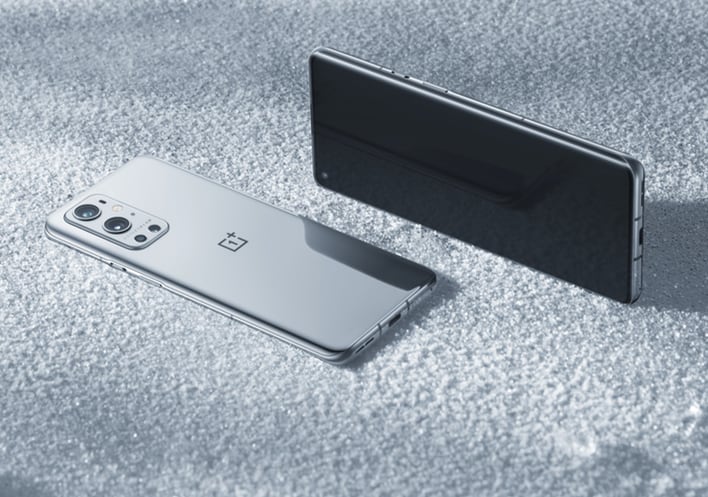OnePlus Responds After Getting Busted For Throttling Performance In 300+ Android Apps
AnandTech performed an exhaustive investigation into the throttling behavior on the OnePlus 9 and found that OxygenOS – OnePlus's flavor of Android 11 – includes a special blacklist of apps that are forbidden from using its fastest "Prime" core or can only use it with a much lower clock speed. As a result, performance takes a noticeable nosedive on the OnePlus 9 Pro compared to other flagship Android devices using the Qualcomm Snapdragon 888 SoC.

The publication was first alerted to the throttled performance after experiencing horrendous performance with the Google Chrome browser and the Speedometer 2.0 benchmark. However, performance was right in line with where it should be when switching to the less popular Vivaldi browser (which could leverage the Cortex X1 prime core on the Snapdragon 888).
A deeper dive into the code for OxygenOS revealed the full extent of the deception. "So far, what we found is that it seems OnePlus' OS is detecting the currently run app, and imposing different CPU DVFS and scheduler behaviours dependent on what you're running," AnandTech writes. "What's evident here, is that this is not a mechanism solely applying to a handful of apps, but applies to pretty much everything that has any level of popularity in the Play Store, including the whole of Google's app suite, all of Microsoft's Office apps, all popular social media apps, and any popular browser such as Firefox, Samsung Internet, or Microsoft Edge."
We will also test the other OnePlus handsets in our performance lab to see if these handsets also manipulate performance in the same way. If they do, we will delist them from the Android Benchmark chart.
— Geekbench (@geekbench) July 6, 2021
Geekbench announced that it would delist the OnePlus 9 and OnePlus 9 Pro from its rankings following the initial report. "It's disappointing to see OnePlus handsets making performance decisions based on application identifiers rather than application behavior," wrote the official Geekbench Twitter account. "We view this as a form of benchmark manipulation. We've delisted the OnePlus 9 and OnePlus 9 Pro from our Android Benchmark chart."
After all the hoopla, OnePlus was pretty much forced to issue a statement on its throttling behavior, which it provided to XDA-Developers:
Our top priority is always delivering a great user experience with our products, based in part on acting quickly on important user feedback. Following the launch of the OnePlus 9 and 9 Pro in March, some users told us about some areas where we could improve the devices' battery life and heat management. As a result of this feedback, our R&D team has been working over the past few months to optimize the devices' performance when using 300 of the most popular apps, including Chrome, by matching the app's processor requirements with the most appropriate power. This has helped to provide a smooth experience while reducing power consumption. While this may impact the devices' performance in some benchmarking apps, our focus as always is to do what we can to improve the performance of the device for our users.
While this explains the performance shortfalls in some of the most popular Android apps, it still falls short of complete transparency. For example, why wasn't this performance throttling brought to the attention of OnePlus 9 Pro customers? Why were so many apps ensnared in the throttling regimen, and didn't the company think casting such a wide net would eventually draw attention? And even if OnePlus believed that it was doing right by customers by taking proactive measures to improve battery life, why not implement a toggle in Settings that would allow them to decide on their own?
It's a very dicey situation for OnePlus, and we're eager to hear the company elaborate on the situation in the future and issue an OxygenOS update to remove the performance bottleneck.


